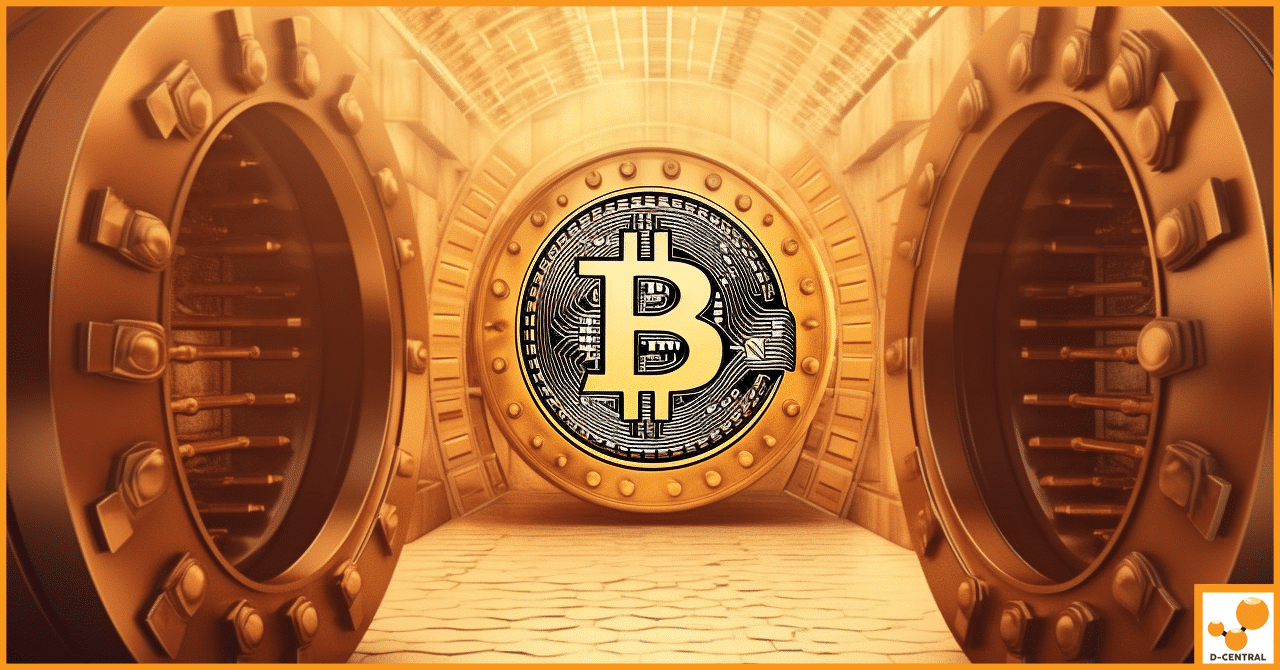
Decoding the Bitcoin Advantage: How It Outshines Stablecoins in Wealth Preservation
The world of digital currency has grown exponentially over the past decade, with various cryptocurrencies emerging and vying for supremacy.
4479 Desserte Nord Autoroute 440, Laval, QC H7P 6E2

In an age swiftly propelled by technological advancements and digital solutions, amidst the landscape of global energy infrastructure, there emerges an unlikely hero – Bitcoin mining. Bitcoin, the world’s premier cryptocurrency, has seen exponential growth over the past decade. With this growth comes the necessity for significant computational power and, by extension, electricity. It could, therefore, be appropriately asserted that Bitcoin mining, the process through which bitcoins are produced and transactions verified, indeed presents a substantial electricity requirement.
Serendipitously, in this massive electricity demand, we unearth an opportunity to address a pressing global issue – the stark lack of access to reliable electricity by over a billion people worldwide, primarily in regions of Africa. Far from just a question of inconvenience, this deficit curtails economic development, education, and access to essential services such as healthcare and sanitation, thereby affecting quality of life to a remarkable degree.
In light of these circumstances, Bitcoin mining may offer a potential and unique solution to this pervasive energy access problem. By heralding a reliable industrial off-taker for energy providers and promoting investment in electrification projects, Bitcoin mining explores novel avenues to bridge the gap between the high costs of developing mini grids and the low demand for electricity in rural and underdeveloped areas. This article will delve deeper into the role of Bitcoin mining in electrification and examine how it can contribute positively to the lives of millions of people living without reliable electricity access.
One of the fundamental challenges when addressing electrification issues lies in the economic viability of mini grids, particularly in small, remote communities. Mini grids, or small-scale electricity networks, are generally ideal for these regions because of their capacity for standalone operation. Still, their development is not without financial hurdles. Let’s delve into this matter.
Providing cost-effective electricity to remote areas is a taxing process, first and foremost as these locales often grapple with what’s known as the “tyranny of small size” issue. The cost per unit of electric capacity is significantly higher in these small-scale projects, primarily due to high investment costs and low utilization, compared to larger, urban grids. This disproportion makes it difficult for mini grid providers to scale their operations while maintaining consumer-friendly electricity prices.
Furthermore, economic activities are generally limited in these remote and underdeveloped areas, resulting in reduced demand for electricity, compounding the financial difficulties for mini grid providers. With a meager customer base and minimal scope for revenue generation, justifying the high costs associated with mini grid infrastructure development and maintenance becomes an immense challenge.
Enter Bitcoin mining, poised with a unique solution to these economic dilemmas. Bitcoin mining operations, notorious for electricity devouring processes that generate new bitcoins and authenticate transactions, can serve as reliable industrial off-takers for mini grid providers.
Embracing this substantial and consistent demand for electricity, mini grid providers acquire a stable income source, thereby offsetting high-cost burdens and enhancing the economic feasibility of mini grids. This makes their operations more efficient and sustainable, fostering increased electrification in rural and underdeveloped areas.
Another significant advantage of Bitcoin mining operations is their inherent ability to attract investors. As the demand for electricity from Bitcoin miners is consistent and, given the rising value of Bitcoin, profitable, it adds an extra layer of security for the ROI on mini grid projects. This certainty can stimulate more investor backing for electrification projects.
Bitcoin mining’s role as an anchor tenant, thus, proves invaluable. Helping overcome the economic hurdles of mini grid providers, promoting greater electrification, and courting investor interest, Bitcoin mining can potentially revolutionize the landscape of energy dialogue, particularly in regions struggling with energy access.
Setting up an efficient Bitcoin mining operation requires meticulous planning and careful consideration of numerous factors. Here’s a comprehensive checklist to navigate this complex process.
To start, assess potential mini grids to find out whether the site’s energy infrastructure is compatible with the demanding energy requirements of the mining operation. The voltage, frequency, and capacity should meet Bitcoin mining’s hefty electric needs and must be examined carefully to prevent any safety hazards like explosions or fires.
Moreover, other considerations like location accessibility, security implications, and connectivity need to enter the assessment to ensure efficient operation setup and minimal disruptions in the long run.
Importing specialized hardware and equipment often becomes unavoidable, given their limited availability in certain regions. For a smooth transition, it is imperative to manage the supply chain proactively and navigate customs processes effectively to ensure timely and cost-effective delivery of the required components.
Containers housing the mining equipment should also have adequate electrical components. This implementation safeguards against possible mishaps during installation and operation. The setup must include proper wiring, suitable circuit breakers, and efficient cooling systems to prevent issues like overheating and fires.
Recruitment of local technicians is paramount in the smooth operation of a mining setup and aiding the local economy. These personnel must undergo training in maintenance and repair of mining equipment, fundamental troubleshooting, and problem-solving skills.
Adhering to a schedule of regular inspections, preventative maintenance, and effecting prompt repairs contributes greatly towards an efficient and profitable mining operation. Equally important are robust security measures that protect the site and its assets from potential threats such as theft or vandalism.
To summarize, when constructing a Bitcoin mining site, the balance between technical considerations and operational logistics is difficult. However, by taking into account potential site location, acquiring and managing specialized hardware, and investing in local talent, providers can optimize their Bitcoin mining commitment as an efficient, secure, and economically beneficial entity in powering the expansion of electricity access.
Launching a successful Bitcoin mining operation in Africa is not without its hurdles, bound by compliance, regulatory, and security considerations, and the efficient use of renewable energy sources. Let’s take a closer look at these challenges and potential solutions.
Establishing mining operations anywhere in the world, including Africa, requires thorough knowledge and understanding of the region’s regulatory landscape. It is pivotal to obtain necessary permits and adhere strictly to guidelines related to energy consumption and environmental impact. Compliance is king in this arena, with any deviations potentially leading to legal complications and significant setbacks.
To ensure smooth and compliant operations, a standard of high operational protocols must be maintained, along with fostering positive relations with local authorities and regulatory bodies.
The protection and security of the mining site and equipment are vital for safeguarding the investment and maintaining profitability. Physical security measures such as fencing, surveillance cameras, and access control systems, along with the recruitment of competent security staff, can help prevent incidents of theft, vandalism, or other potential threats.
In the digital arena, cybersecurity practices need to be upheld. Secure communication protocols, vigilant network monitoring, and data encryption can help protect mining equipment and valuable digital assets from hackers.
Harnessing stranded renewable energy resources such as hydro, wind, solar, and geothermal provides an answer to the ever-present need for a sustainable and cost-effective source of electricity for Bitcoin mining operations. Stranded energy, defined as energy that is wasted as it is generated in an area where it cannot be readily consumed, may often be found in abundance in Africa.
Forming partnerships with local energy providers may help to uncork these untapped energy sources, enabling the operation of mining sites in areas where grid connectivity is limited. Implementing strategies such as load balancing, energy storage solutions, and intelligent demand-side management further ensures optimal utilization of resources and minimal environmental impact.
In a nutshell, a successful, robust Bitcoin mining operation in Africa can be achieved by navigating regulatory norms and stringent security measures, coupled with sustainable energy-harnessing practices. Overcoming these challenges can position Bitcoin mining as a truly transformative force in Africa’s energy narrative.
The advancement of Bitcoin mining holds numerous potential benefits, among which is the significant growth in microgrid electrification. Highlighting this potential requires the identification of new regions for expansion, fostering of solid partnerships, and the formation of a robust, long-term vision for the role of Bitcoin mining in these electrification initiatives.
The first step begins with recognizing regions requiring enhanced electrification, with a focus on areas where renewable energy has untapped potential. Essential considerations include not only the physical requirements and energy access needs, but also fundamental logistical factors such as local regulations and transportation infrastructure. A comprehensive analysis of these aspects certifies viable regions ripe for the integration of Bitcoin mining into their power grids.
The transition is simplified by building partnerships with local entities already vested in the establishment and operation of mini grids within these regions. By uniting with existing energy providers, the process of integrating new mining sites into the current local infrastructure becomes efficient and streamlined. Providing mutual incentives and sharing knowledge and expertise with these partners makes such collaborations appealing and profitable for all parties involved.
Finally, maintaining a long-term vision for the role of Bitcoin mining in electrification efforts is crucial. With Bitcoin mining operations expected to grow, they can eventually become an essential factor in expanding electrification in rural areas. Here, these mining operations play dual roles – not only bringing reliable power to previously underserved communities but also setting the stage for investment in renewable energy projects ignited by mining’s consistent need for electricity.
The continued growth of cryptocurrencies like Bitcoin necessitates increased mining operations that invariably play an increasingly significant role in shaping the trajectory of energy consumption and production. By promoting sustainable mining practices and collaboration with local energy providers, Bitcoin mining can enrich the decentralization and sustainability of the energy system at a global scale.
The expansion of microgrid electrification through Bitcoin mining, therefore, holds much promise. By identifying new locations, creating strategic partnerships, and fostering a forward-looking vision, Bitcoin mining can fuel the progression toward greater electrification, ultimately enhancing the quality of life for individuals globally by lighting the path toward economic growth and self-sufficiency.
In conclusion, Bitcoin mining has immense potential to address global energy challenges and shape the future of energy consumption and access. By serving as a reliable off-taker for energy, it can overcome financial obstacles in extending electrification efforts to rural areas. Additionally, the demand for electricity by miners can drive investments in renewable energy projects, fostering sustainable and decentralized energy systems. Sustainable practices and partnerships with local energy providers further enhance access to renewable sources and redefine energy consumption. As cryptocurrency usage expands, embracing Bitcoin mining can contribute to economic growth, energy sustainability, and universal access. D-Central Technologies is ready to assist those interested in entering this groundbreaking sector and navigating its opportunities. Let’s embark on this bold frontier together, one Bitcoin at a time.
Q: What role can Bitcoin mining play in electrification?
A: Bitcoin mining, with its significant electricity demand, can be a reliable industrial off-taker for mini grid providers in underdeveloped areas, thus helping bridge the gap between high costs of developing mini grids and low electricity demand. Consistent demand for electricity from Bitcoin miners can provide a stable source of income for mini grid providers, making their operations more sustainable.
Q: What is the ‘tyranny of small size’ problem?
A: The ‘tyranny of small size’ problem refers to the fact that building small-scale energy infrastructure or mini grids can be significantly more expensive per unit of capacity compared to larger projects, making it hard for providers to scale operations and offer affordable electricity.
Q: How can Bitcoin mining attract investors to mini grid projects?
A: Bitcoin mining operations require a considerable amount of electricity. This constant, profitable demand can assure investors of the returns on their investment in mini grid projects, making such projects more attractive for funding.
Q: What factors need to be considered when building a Bitcoin mining site?
A: When setting up a Bitcoin mining site, important considerations include assessing the energy compatibility of the site, ensuring that specialized hardware and equipment can be imported, and hiring and training local technicians for regular maintenance and handling of potential issues.
DISCLAIMER: D-Central Technologies and its associated content, including this blog, do not serve as financial advisors or official investment advisors. The insights and opinions shared here or by any guests featured in our content are provided purely for informational and educational purposes. Such communications should not be interpreted as financial, investment, legal, tax, or any form of specific advice. We are committed to advancing the knowledge and understanding of Bitcoin and its potential impact on society. However, we urge our community to proceed with caution and informed judgment in all related endeavors.
Related Posts

The world of digital currency has grown exponentially over the past decade, with various cryptocurrencies emerging and vying for supremacy.

n the intricate world of Bitcoin mining, Application-Specific Integrated Circuit (ASIC) miners stand as the backbone of the industry, driving

In the rapidly evolving world of cryptocurrency, choosing the right mining hardware can significantly impact your success. This comprehensive guide